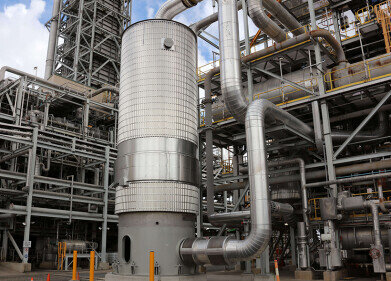Air Clean Up
Does Pollution Affect Hay Fever?
Jul 22 2019
At present, approximately 20% of the British population are believed to suffer from hay fever. Most commonly brought on by prolonged exposure to particles of pollen in the air, hay fever generally afflicts people during the summer months when the growing seasons are in full swing. Traditionally, this has come to an end in late July, but the effects of pollution may mean that symptoms will still be experienced well into August.
That’s because emissions of greenhouse gases are contributing to climate change, which contributes to rising temperatures all around the globe and increased concentrations of carbon dioxide in the air. Both of these mean that pollen persists in the atmosphere for longer, while other forms of pollution can also weaken the respiratory systems of sufferers and make them more susceptible to hay fever’s harmful effects.
On the rise
When hay fever was first discovered by English doctor John Bostock over two centuries ago, he reported that there were only 28 other cases (besides himself) in the British capital. Today, that figure has swelled to one in every five persons, with around half of the population estimated to suffer from it by 2030. This, despite the fact that more people were exposed to pollen from working in the fields 200 years ago than they are today, and that pollen counts in the UK have been consistently falling for years.
Why, then, are more people suffering from hay fever? It’s believed that poor air quality is the likeliest culprit. The harmful emissions from diesel-powered vehicles contain contaminants such as nitrogen oxides (NOx) and ozone, which can react with the pollen grains to release more of the proteins which are guilty of causing the allergy. At the same time, these contaminants and others (such as particulate matter, nitrogen dioxide and sulphur dioxide) are damaging the membranes inside our respiratory tracts, which increases susceptibility to the condition.
More pronounced, more persistent
Not only does pollution make the effects of hay fever more widespread among the populace and more pronounced among individual sufferers, but it is also responsible for making them last longer. Just as emissions from coal-fired power stations are being linked to extreme rainfall events, so too are industrial contaminants closely associated with rising global temperatures and extended periods of draught.
This causes the pollen in the atmosphere to stick around for longer, since the growing season has become stretched and there is no rain to disburse the particles. All this adds up to an unpleasant picture for the millions of Britons who suffer from the affliction, and contributes further fuel to the fire calling for the UK government to tackle the air quality crisis in the country once and for all. However, given its current track record on the issue, it’s probably not advisable to hold your breath in waiting for a response – especially if you’re a hay fever sufferer.
Events
IWA World Water Congress & Exhibition
Aug 11 2024 Toronto, Canada
Aug 25 2024 Stockholm, Sweden and online
Sep 03 2024 Mexico City, Mexico
Sep 03 2024 Mexico City, Mexico
Sep 03 2024 San Diego, CA, USA














